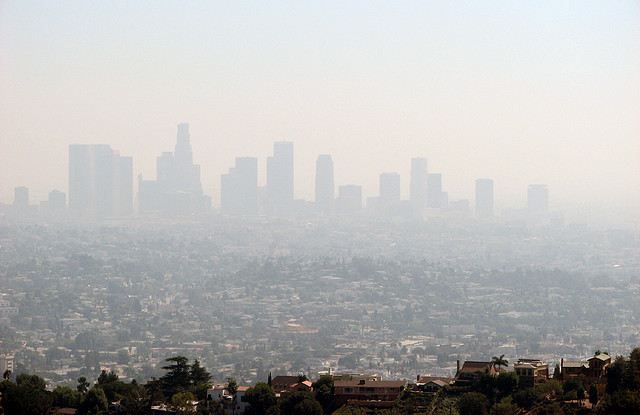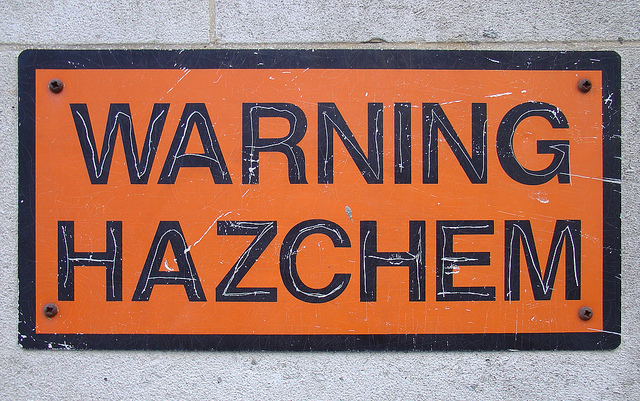The federal Clean Air Act (CAA) requires the U.S. Environmental Protection Agency (EPA) to establish and maintain a list of air toxics, named as Hazardous Air Pollutants (HAPs), and to set emissions standards for many sources of such pollutants. HAPs include heavy metals, organics, and other airborne pollutants that are not otherwise regulated as “criteria” air pollutants (such as carbon monoxide, particulate matter, and ground level ozone). This note summarizes requirements applicable to stationary sources.
Read MoreAudit, Compliance and Risk Blog
EPA Proposes to Rescind Last Administration’s Long-Delayed Accidental Release Prevention Revisions
Posted by Jon Elliott on Tue, Jul 17, 2018
In the last week before President Obama left office, the Environmental Protection Agency (EPA) completed a multi-year review of its Accidental Release Prevention (ARP) program for toxic catastrophe prevention, and adopted significant expansions of ARP requirements (I wrote about them here). EPA proposed ARP revisions in March 2016 (I blogged about them here). Then, when President Trump took office, EPA reversed course, repeatedly deferring the effective date of those revisions while the agency reviewed them. In May 2018 EPA completed its review, and published a proposal in the Federal Register to rescind almost all these expansions and return ARP requirement to those in place before 2017. EPA also included an alternative proposal that retained a few more elements, and requested public comment on both versions no later than July 30, 2018.
Read MoreTags: OSHA, Environmental risks, Environmental, EPA, Greenhouse Gas, ghg, Hazcom, effluent, mact
EPA Promulgates “Back-to-Basics” Process for Reviewing Air Quality Standards
Posted by Jon Elliott on Tue, Jun 26, 2018
On May 9, Environmental Protection Agency (EPA) Administrator Chris Pruitt issued a policy memo recasting his agency’s basic approach to review and revision of national ambient air quality standards (NAAQSs) – EPA’s broadest and most basic targets for national pollution levels. He entitles it a “Back-to-Basics” Process for Reviewing [NAAQSs]”, echoing the phrase he used last year to recalibrate the agency’s relationships with the public and its various stakeholders. (I blogged about this general policy here).
Read MoreTags: Environmental risks, Environmental, Greenhouse Gas, ghg, CAA, mact
EPA Withdraws “Once in Always in” Policy For Major Air Toxics Sources
Posted by Jon Elliott on Tue, Mar 06, 2018
The Clean Air Act (CAA) directs the Environmental Protection Agency (EPA) to define “hazardous air pollutants (HAPs)” that may pose acute health hazards, and to impose regulations to reduce those hazards. Controls include permits for “major sources” of HAPs based on “Maximum Achievable Control Technologies (MACT),” and lesser controls for non-major “area sources.” Since 1995, EPA policy has been that every emission source that met major source criteria at the time a MACT became effective is “once in, always in” and cannot requalify as a less-regulated area source even if it accepts legally binding controls that reduce its “potential to emit.” On January 25, 2018 EPA reversed that decades-old policy.
Read MoreTags: Environmental risks, Environmental, EPA, Greenhouse Gas, ghg, climate change, CAA, mact
Hazardous Materials Commentary as Textbook for Professionals
Posted by Jon Elliott on Tue, Nov 17, 2015
 For more than 25 years, I’ve taught one of the core required courses in the Hazardous Materials Management Certificate program offered by University of California Santa Cruz Extension (UCSC-Ex). The program is intended to provide professionals with a solid foundation in the principles, regulations, and technologies required to manage hazardous materials and hazardous waste. In my course–the Regulatory Framework for Toxic and Hazardous Materials–I provide overviews of:
For more than 25 years, I’ve taught one of the core required courses in the Hazardous Materials Management Certificate program offered by University of California Santa Cruz Extension (UCSC-Ex). The program is intended to provide professionals with a solid foundation in the principles, regulations, and technologies required to manage hazardous materials and hazardous waste. In my course–the Regulatory Framework for Toxic and Hazardous Materials–I provide overviews of:
Tags: Audit Standards, Health & Safety, California Legislation, Training, Environmental risks, Environmental, EHS, Greenhouse Gas, ghg, Hazcom, mact
Important Clean Air Act (CAA) elements direct the US Environmental Protection Agency (EPA) to reduce emissions of hazardous air pollutants (HAPs). Unlike the conventional pollutants associated with regional problems such as smog or acid rain, HAPs represent a list of 187 specific air toxics that can be harmful in low concentrations in much smaller areas. HAPs are subject to tighter controls and lower permitting thresholds.
Tags: Business & Legal, Health & Safety, Environmental risks, Environmental, EHS, EPA, Greenhouse Gas, ghg, Hazcom, mact
Environmental Compliance: Santa Barbara Yearly Regulatory Measures
Posted by STP Editorial Team on Mon, Mar 31, 2014
State law requires the Santa Barbara County Air Pollution Control District to publish a list each year of regulatory measures that may be considered for adoption or amendment during the upcoming calendar year. The District posted its list for 2014 on January 5, 2014, which can be seen below. Before adopting or amending any regulation, the District publishes a notice in a local newspaper and holds a hearing to accept comments from affected businesses and other interested parties.
Tags: Health & Safety, California Legislation, Environmental risks, Environmental, EHS, Greenhouse Gas, ghg, mact, Santa Barbara
If government provided a unified approach to chemical regulation, then each chemical might be subject to a single set of requirements, which ideally would be tailored to reflect chemical-specific hazards throughout its life cycle. Instead, each chemical is subject to its own loosely connected (some would say haphazard) collection of environmental, health and safety (EH&S) requirements. Some are federal, some are state (or provincial if you’re in Canada), and others are regional and even local. You may need to refer to agencies at all three levels (federal, state and local) to identify your regulators and their requirements – although many organizations only deal with the agency responsible for permitting and inspecting day-to-day activities.
Tags: Audit Standards, Environmental risks, Environmental, EHS, EPA, Hazcom, MSDS, mact
STP Launches New Industry-Specific MACT Standards Guides
Posted by Lorraine O'Donovan on Fri, Jul 12, 2013
Organizations increasingly need specialized guidance in order to self-audit and show efforts to comply with legislation, and demonstrate due diligence.
Tags: Corporate Governance, Business & Legal, Audit Standards, Environmental risks, Environmental, EHS, mact
Opportunities For Learning: Free STC Webinar Open To All
Posted by Melanie Powers on Fri, Jan 11, 2013
Essentials of Stationary Reciprocating Internal Combustion Engines (RICE) MACT Compliance
Date: Thursday, January 24, 2013
Time: 2:00 PM - 3:00 PM EDT
Free! All are welcome
Tags: Environmental risks, Environmental, EHS, EPA, mact, Webinar, NSPS








